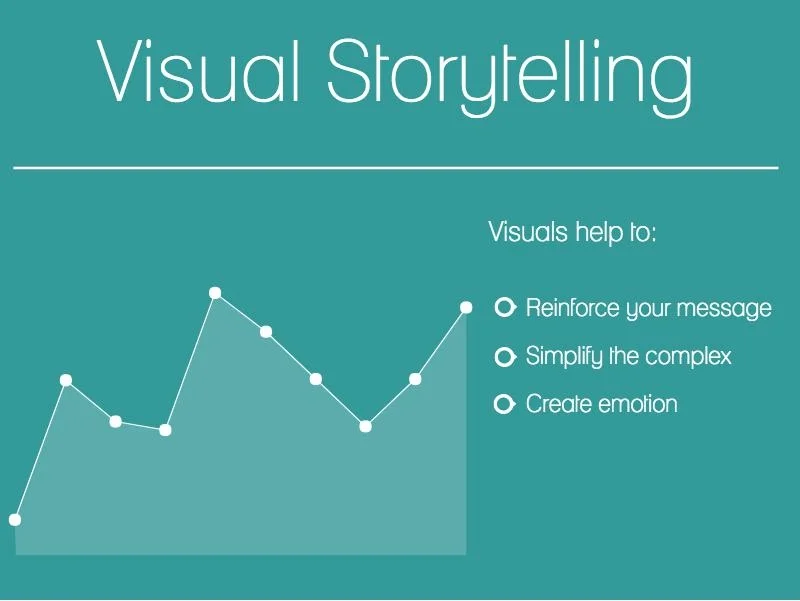Visual Storytelling
Photo by Alex Mihis on Unsplash
In this age of Instagram and emojis, you probably know that visuals are crucial in modern communication. But did you know that that 90% of information that comes to the brain is visual, and presentations with visual aides are 43% more persuasive? Visuals are key in presentations that don't put the audience to sleep and if you've ever seen a TED Talk you understand the power of them.
While I’m no data vis expert, as a strategist visuals play an important role. Visuals help break down complex information as well as create a strong narrative which is why I rely on them for every presentation.
Here are the top reason why visuals are so crucial.
Created by Piktochart
Visuals help to reinforce
While ideas and information are abstract, visuals are concrete. They help with comprehension and retention of a message. Many studies have shown the importance of visuals for learning and retaining information. If we want our message to be heard and remembered in business, we should apply the same thinking to the visuals in own presentations.
It’s important to always keep in mind what you want the reader to take away and aim for visuals that reinforce your message.
Visuals help to simplify
With so much information out there, we look at summaries and highlights in order to quickly breakdown the most important information. As we skim through information visuals act as a quick reinforcer of lengthy information and allow us to move on the next point.
There's a reason why infographics have become hugely popular. Infographics are great because they visually illustrate something abstract like a number. Who wants to read through dozens of stats and dense information when a visual can communicate that in a much simpler way?
Visuals spark emotion
I recently came across a great article on how readers remember the emotion of a message rather than the facts. Visualization researchers (yes, they exist) recently conducted a study on how users interpret and engage with data. According to the results:
“People remember the gist, message, and the feeling, not the numbers.”
When thinking of the visual behind your message, ask yourself what type of emotion you want to the reader to have. For instance, is your message meant to be empowering, uplifting or more on the serious side? Once you have the tonality determined, write it down and have the emotion in mind while you search or create your visual.
As a recap. great story is one that is lasting. Words alone can be powerful but visuals enhance and solidify your message with your audience. So the next time you want to say something important and make it memorable, look to a visual to elevate your message.

